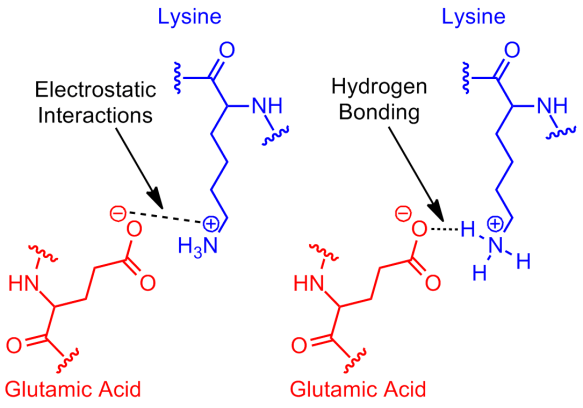Four major types of noncovalent bonds or forces are involved in the structure and function of biomolecules. In addition to hydrogen bonds and hydrophobicity, there are; charge-charge interactions and van der Waals forces.
Let us discuss each.
1. Charge-charge interactions, hydrogen bonds, and van der Waals forces are variations of a more general type of force called electrostatic interactions.
Charge-charge interactions are electrostatic interactions between two charged particles. These interactions are potentially the strongest noncovalent forces and can extend over greater distances than other noncovalent interactions.
The stabilization of sodium chloride or table salt (NaCl) crystals by interionic attraction is an example of a charge-charge interaction. Water, greatly weakens these interactions as we saw earlier.
Consequently, the stability of biological polymers in an aqueous environment is not strongly dependent on charge-charge interactions, but such interactions do play a role in the recognition of one molecule by another.
For example, most enzymes have either anionic or cationic sites that bind oppositely charged reactants. Attractions between oppositely charged functional groups of proteins are sometimes called salt bridges.

Salt bridges (hydrogen & charge-charge) between Glutamic acid and Lysine. Click on image for credit.
A salt bridge buried in the hydrophobic interior of a protein is stronger than one on the surface because it can’t be disrupted by water molecules. The most accurate term for such interactions is ion-pairing.
Charge-charge interactions are also responsible for the mutual repulsion of similarly charged ionic groups. And these charge repulsions can influence the structures of individual biomolecules as they interact with other, like-charged molecules (similar to the hydrophobic effect).
